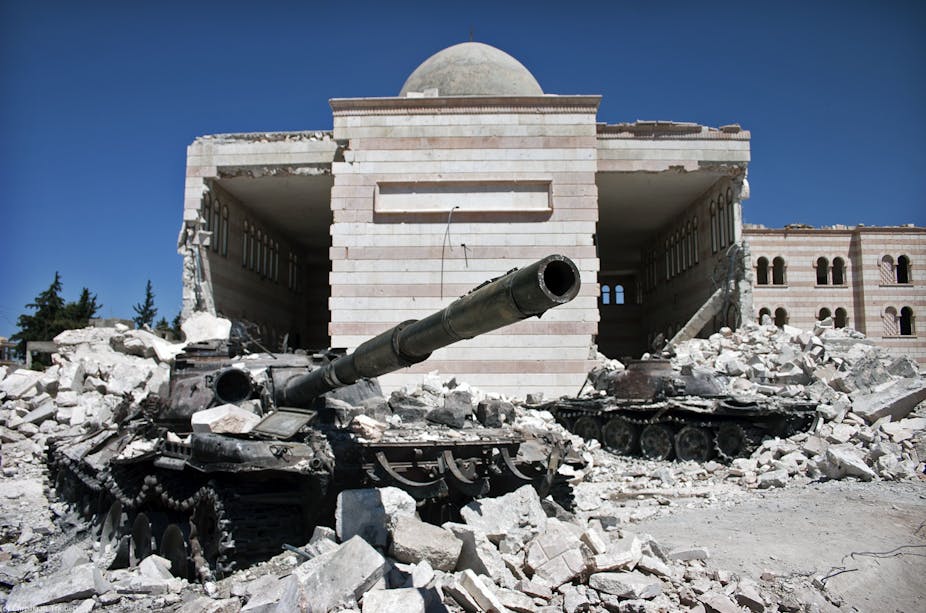The Syrian crisis enters a new chapter. The international community has struggled to produce what may prove to be an interim solution. But this is just another crisis in the Middle East, they say. Things will blow over. The march of economic globalisation will continue, creating one open and free marketplace. It’s unstoppable. The worst downside could be a hike in oil prices.
From a business perspective, this is a popular viewpoint; after all, events in Syria are locked away behind our widescreen TVs. But we should stop and reflect. Though the assumption that we are headed towards one global marketplace might be rational, it needs rethinking.
If we look back at the Syrian crisis, we can draw some interesting conclusions, early warning signals of a seismic shift that could be waiting just around the corner.
The first is obvious. The unipolar era has ended. The US now cannot act alone, or rely on its traditional allies. The time when the US was the world’s only architect has come to an abrupt halt.
The second conclusion is that the institutions crafted after World War II to police the world are due for a major overhaul. The UN Secretary-General and the US President have apparently been at loggerheads and the UN Security Council still stumbles around, attempting to find common ground. Some even hold that this whole machinery of global cooperation is now gridlocked, grinding to a halt.
These conclusions point towards a power vacuum and if nature abhors a vacuum, we must consider what could fill it. Answering this question is difficult and traditional economic projections won’t help us as they provide us with extrapolations of the current world. But there are two more conclusions that can help us.
The first is that there are other power players wanting to be heard. The most obvious are Vladimir Putin and Chinese leader Xi Jinping, which leads us to consider what the long-term objectives of these and other new voices are. Certainly, attitudes to business, human rights and globalisation differ from those of the US, and these new voices seem to be set to pursue their own interests.
Attitudes to globalization, in particular, may produce surprises. It is said that Putin has concluded that “regional integration is more reliable than globalisation” and that his interest is in building, and protecting, a regional power-base.
The objectives of some of these new players may not be the support of economic “one world” globalisation but, critically, the use of the current globalisation effort as a stepping stone to economic enlargement and, from there, the creation of zones of influence. These new powers are clever enough too to realise that the role of the world’s policeman carries with it little thanks – just talk to the US and the UK.
But this is more than the end of the unipolar era. Another era has ended too – a world that is shaped just by powerful nation states. Of course financial markets still exert their influence, but there is a new “kid on the block” – social movements – large groups of the disenchanted. The Arab Spring is the example on everyone’s lips, but this new kid on the block is immature and while adept at bringing down states, isn’t too experienced at building replacements.
So where does all of this take us?
Economic globalisation, as defined by the US and the West, may be dying, withering on the vine. We are so transfixed by the accepted (but untested) view that global trade will ensure stability that we cannot see an alternative future.
So what should businesses do? The answer is to consider a different world crafted by different architects. In this world, some borders may be permeable; others may shift and be impermeable.
It would be a mistake to start by looking at the world as it stands today. This approach will hide new forces and players.
A better way to see a different future is to consider potential global architects. Think about two types of architects: the leaders of powerful states, and social movements. Then consider the resources that these players will need to grow and maintain their power. This will probably leave you staring at a map with three features. The first is a range of zones of influence. Think about how these zones may or may not cooperate. The second feature to look out for is where these zones overlap – potential “hot spots”. Finally, you will be left with the “lost” - countries, areas that are of little interest to the big players. And when you conduct this exercise remember the final lesson from the Syrian crisis – national borders may be here today but not tomorrow. After all, Syria’s borders were defined after the First World War by a defunct global institution – the League of Nations.
When you have finished this exercise overlay this new map on top of your organisation’s existing and future markets. Will you be able, in the future, to participate in all of these markets? What type of capitalism will prevail in each and how will this impact your competitive strategy? Which of the new zones matches most closely your organisation’s capabilities? Who, if anyone, will police the “lost”? How can you create a portfolio that is resilient in this alternative world? How can we track events to see which world we’re headed towards?
If multinational businesses are not debating these questions already, then they ought to start right now. That unexpected future might be just around the corner.

